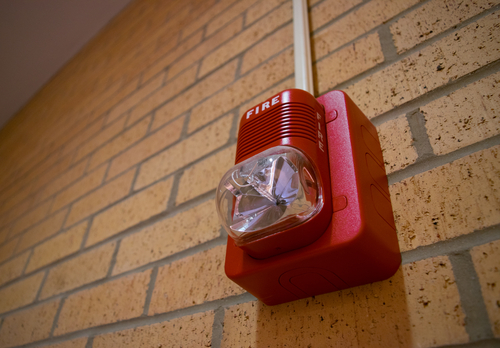As the new school year draws near, college students across the country are preparing to move to campus in a dormitory or off-campus housing. Through their annual “Campus Fire Safety for Students” campaign in September, the National Fire Protection Association (NFPA) and the Center for Campus Fire Safety (CCFS) are working together to help ensure these residences are as safe as possible for students.

Campus Fire Safety Month raises awareness about the threat of fires in both on- and off-campus housing, putting relevant information in the hands of students, their parents, and campus housing staff and administrators, helping students make living spaces as safe as possible from fires and associated hazards.
According to CCFS, from January 2000 to April 2023, 94 fatal fires occurred on a college campus, in Greek housing, or in off-campus housing within three miles of the campus, claiming 134 lives. Of the 94 fires, 38 were accidental, involving cooking, candles, smoking, or electrical equipment, and resulted in 51 student fatalities.
In addition, according to NFPA’s latest “Fires in Dormitory-Type Properties” report, between 2017 and 2021, U.S. fire departments responded to an estimated average of 3,379 structure fires each year in dormitories, fraternity houses, sorority houses, and barracks. Fires in dormitory-type properties caused an annual average of 23 civilian injuries and $12 million in direct property damage during that period. Approximately three out of four fires in these properties began in the kitchen or cooking area, accounting for 60% of the civilian injuries and 17% of the direct property damage. Cooking equipment was involved in nearly 9 out of 10 fires.
Following are additional statistics from the report:
- The months of February, September, and October were peak times for fires in dormitory properties.
- Fires were more common during the evening hours between 4 p.m. and midnight, when over half of the fires (54%) occurred.
- Kitchen and cooking equipment were involved in 86% of the fires.
- Fires were also more common on weekends, with Saturday and Sunday being the leading days for fire events.
Lorraine Carli, vice president of outreach and advocacy at NFPA and CCFS Advisory Council member, said, “Campus Fire Safety Month is a great opportunity to better educate students about where fire hazards exist and simple-but-critical ways to prevent them.”
In addition to safe cooking procedures, NFPA and CCFS said the following tips can help students reduce the risk of fires and save lives:
- Know and practice the building’s evacuation plan, as well as alternate routes out of the building.
- Test smoke alarms monthly in an apartment or a house. Ensure smoke alarms are installed in all sleeping areas, outside of all sleeping areas, and on every level of the apartment or house. Never remove or disable smoke alarms.
- Keep combustible items away from heat sources, and never overload electrical outlets, extension cords, or power strips. Many fires are caused by portable light and heat sources, like space heaters and halogen lamps.
- Keep common areas and hallways free of possessions and debris. Never block exit routes.
Many of the resources, including videos, checklists, infographics, and tips sheets are designed to be shared through social media, school newspapers, college websites, and posted in dormitory common areas. For more Information about the Campus Fire Safety for Students campaign and to find free resources, visit nfpa.org/campus and the CCFS Share! For Students webpage.
ALSO READ: Back to Basics: Most Common Fire Safety Code Violations
